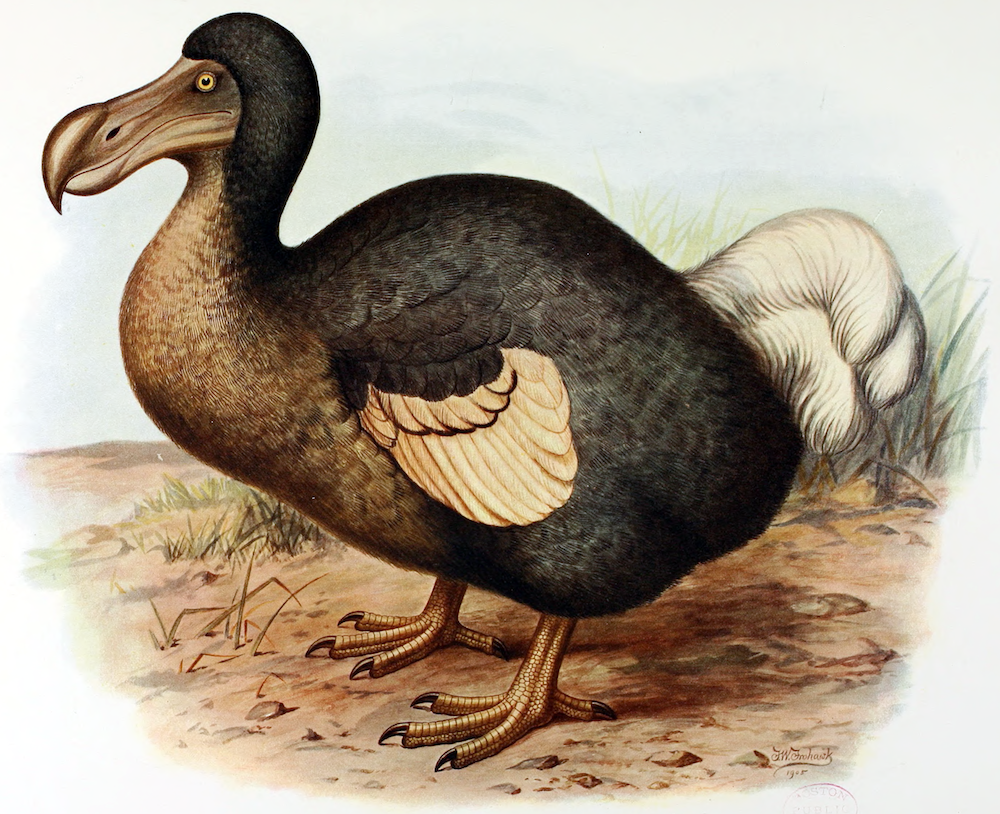
Have you ever wanted to see a real living and breathing Carolina Parakeet in person? How about a Passenger Pigeon or the infamous Dodo?
Even though these species of birds have long been extinct, recent scientific breakthroughs are making it more likely that we will be able to bring extinct species back to life.
In fact, in 2003, an extinct goat (Pyrenean ibex) was brought back to life, but it lived for just a few minutes. And two weeks ago, scientists announced that they’ve created embryos of an extinct frog species, though none have successfully developed into the frog.
Those who study the possibilities of bringing species back (often called “de-extinction”) claim it’s only a matter of time before we’re able to bring many species back. There’s actually a shortlist of species that may become “de-extinct,” including the Wooly Mammoth, Saber-toothed Tiger, Moa (bird), Wooly Rhinoceros, Ivory-billed Woodpecker and more.
But if you’ve ever seen Jurassic Park, you know this can raise a lot of ethical and practical questions about whether we should bring animals back that no longer exist.

To revive a creature that no longer inhabits the earth could have huge consequences. While we all lament the fact that Passenger Pigeons, once robust and widespread in the United States, are completely gone, they were actually quite menacing.
In 1866, there was a reported flock a mile wide and 300 miles long that contained more than 3 billion birds and took half a day to pass over. You can imagine all the droppings the flock left.
Just like how the introduction of House Sparrows in the United States has created an invasive species, we cannot know the ramifications if one of these extinct species was accidentally, or intentionally, released back into the wild.
There’s also an ethical question. While the extinction of the Dodo and Carolina Parakeet was accelerated by destructive human behavior, other species, like the Wooly Mammoth or the Irish Elk, died off from natural reasons. A distinction between simply reviving for scientific purposes and restoring the species into the wild needs to be made.
This is a really interesting debate that will be discussed in the coming years. What do you think? Should we revive some extinct species?



2 Comments
While watching a PBS documentary about reviving the mammoth, I had mixed feelings. I find pre-history fascinating, and learn all I can about these extinct mammals. Just imagine: elephants roaming North America! Wow! But my next thought turns to the exploitation that will inevitably follow the creation of these large animals. Black rhinos and others have been poached to the very edge of extinction. How valuable would “”de-extincted” mammoths or saber-toothed lions or wooly rhinos be to the poaching trade? Their trophies’ value would multiply a hundred times. It would be like spending millions to bring back the world’s most valuable target. As much as I would love to be able to see a live Tasmanian Tiger or quagga or mammoth, etc, we shouldn’t just create them for a zoo exhibit. Cuz, lets face it, we could never put these wonderful creatures back in their natural environments, because those don’t exist anymore either. Lets concentrate on protecting the wildlife we still have. Start with educating the people who create the market for tiger parts and rhino horns. Really? “Chinese medicine” contributes to the rapid depletion of the rhino and tiger populations, among others. Reign in the poaching. Stop sending federal support to countries with lax poaching enforcement. Educate the people in the countries, where these animals are hanging on, how their heritage is being robbed for the sake of the mistaken beliefs of ancient superstitions. The people who buy animal-based “medicine” contribute to the demise of so many of earth’s creatures. Teach those people what they’re doing to contribute to extinction. Sorry I went off in a little different direction there.
Science Brings Us Closer to Reviving Extinct Species | Backyard Chirper Blog